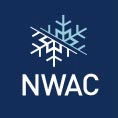Avalanche Forecast
Issued: Dec 12th, 2017 10:00AM
The alpine rating is , the treeline rating is , and the below treeline rating is Known problems include Loose Wet.
This weather provides a nice opportunity to check out a variety of surface snow conditions but be sure to watch for early season/low snow travel hazards. Also, watch for shallow wet surface snow conditions on some steep sun exposed slopes, especially below rocks or cliffs.
Summary
Detailed Forecast
This stretch of high pressure has featured mostly sunny and warm conditions with light winds for areas west of the Cascade crest and at higher elevations. Local colder, cloudier and breezier conditions have been seen in and around the Cascade Passes. More of the same can be expected on Wednesday.
This weather provides a nice opportunity to check out a variety of surface snow conditions but be sure to watch for early season/low snow travel hazards. Early season terrain hazards include poorly covered rocks, vegetation and creeks, particularly at lower elevations.
Also, watch for shallow wet surface snow conditions on some steep sun exposed slopes, especially below rocks or cliffs.
Snowpack Discussion
Strong high pressure has now been over the region for over a full week. Sunshine and very mild temperatures have been the story with cooler temperatures and areas of low clouds at lower elevations and in the Cascade Passes. This weather has allowed for overall strengthening and consolidation of an already strong snowpack. The snowpack is well consolidated with settled old storm snow of about 1.5 to 2.5 feet over the strong Thanksgiving rain crust.
No human-triggered avalanches have been reported in over a week. Some natural small loose wet slides have occurred on mainly steep sun exposed slopes over the last week, but have become much less frequent over the past several days. Active wind loading has not been observed since late last week. See the Mt. Baker zone/observation for local glide avalanche concerns in that zone.
Surface conditions are highly variable. On solar aspects, surface melt-freeze crusts reform every night. On shaded and sheltered aspects, settled storm snow is still providing some nice skiing and riding conditions. Many aspects in higher terrain now feature wind stiffened snow. Near surface faceting and surface hoar growth has been reported on colder, non-solar aspects throughout the Cascades but especially in the cooler Cascade Passes. These persistent grain types will become important when snowfall returns and watched as potential future weak layers.
Observations
Don't forget to check the numerous recent high quality observations posted to NWAC.
North
On Monday, Pro patrol at Mt Baker Ski area reported two climax/glide avalanches off steep rock faces during the late morning hours. The slides were on an east and a south face, both were about 30 feet across and 3 feet deep, with debris piles 4-5 feet deep. No other avalanche activity was observed.
NWAC observer, Lee Lazzara travelled extensively Sunday, December 10th in the Swamp Creek / Winchester area from 3000-6100 feet. While the temperatures were quite warm and melting evident, surprisingly little current or previous loose wet avalanche activity was noted, mainly tree bombs. No avalanche activity was noted with variable but good ski quality in well settled storm snow, well bonded to the T-Day crust. Very little to no surface hoar or near surface facets were seen, other than in non-avalanche terrain near valley bottoms and creeks.
Central
Professional Observer Dallas Glass skied non-solar slopes in the Alpental valley on Monday. He observed a very strong temperature inversion up to 4800' with cold, dry snow below the inversion. He found moderate easterly winds near treeline at 5200’. No snow was being transported. He found no avalanche problems that affected his travel. He noted the biggest travel hazard was low snow cover. Surface snow conditions were extremely variable.
South
No observations since Friday.
Problems
Loose Wet
Release of wet unconsolidated snow or slush. These avalanches typically occur within layers of wet snow near the surface of the snowpack, but they may quickly gouge into lower snowpack layers. Like Loose Dry avalanches, they start at a point and entrain snow as they move downhill, forming a fan-shaped avalanche. They generally move slowly, but can contain enough mass to cause significant damage to trees, cars or buildings. Other names for loose-wet avalanches include point-release avalanches or sluffs. Loose Wet avalanches can trigger slab avalanches that break into deeper snow layers.
Travel when the snow surface is colder and stronger. Plan your trips to avoid crossing on or under very steep slopes in the afternoon. Move to colder, shadier slopes once the snow surface turns slushly. Avoid steep, sunlit slopes above terrain traps, cliffs areas and long sustained steep pitches.
Several loose wet avalanches, and lots of pinwheels and roller balls.
Loose wet avalanches occur where water is running through the snowpack, and release at or below the trigger point. Avoid terrain traps such as cliffs, gullies, or tree wells. Exit avalanche terrain when you see pinwheels, roller balls, a slushy surface, or during rain-on-snow events.
Aspects: South East, South, South West.
Elevations: All elevations.
Likelihood
Expected Size
Valid until: Dec 13th, 2017 10:00AM
